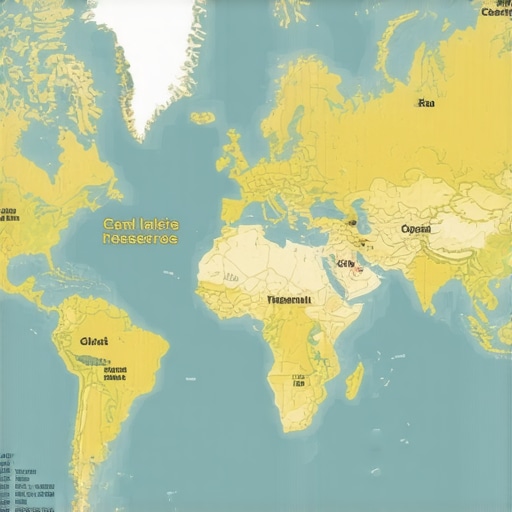Understanding the Strategic Role of Central Bank Gold Purchases in 2025’s Complex Market Dynamics
As financial markets evolve amidst geopolitical tensions and macroeconomic uncertainties, central banks’ gold acquisition strategies have garnered heightened attention from investors and analysts alike. The 2025 outlook for gold prices hinges significantly on the scale and motivations behind these sovereign reserves adjustments, reflecting broader shifts in global monetary policies.
Deciphering the Underlying Motivations of Central Bank Gold Accumulation
Central banks’ gold purchases are often driven by a desire to diversify reserves, hedge against currency devaluation, and bolster national financial security. In 2025, heightened geopolitical risks and persistent inflationary pressures in major economies have prompted many sovereign entities to accelerate their gold accumulation, signaling a potential bullish trend in the precious metal’s market.
What Are the Key Indicators Signaling a Surge in Central Bank Gold Buying in 2025?
Monitoring official reports from the World Gold Council and central bank disclosures reveals a consistent increase in gold reserves, particularly among emerging economies seeking to reduce dependence on US dollar reserves. This trend is reinforced by the strategic shift towards gold as a stabilizing asset class amid ongoing currency volatility and geopolitical uncertainties.
Implications for Gold Price Trajectories: A Multi-Faceted Perspective
The surge in central bank purchases is expected to exert significant upward pressure on gold prices, especially if coupled with declining gold supply from mining sectors and increased demand from institutional investors. The intricate interplay between these factors necessitates a nuanced approach to market analysis, considering both macroeconomic drivers and geopolitical developments.
How Will 2025 Market Trends Influence Gold Investment Strategies?
Investors should consider diversifying their portfolios with physical gold and gold derivatives, capitalizing on the anticipated price appreciation driven by central bank activities. For detailed strategies, exploring our comprehensive guide to building a long-term gold portfolio can offer valuable insights.
Could the Central Bank Gold Buying Boom Lead to a Price Bubble?
While increased official sector demand generally supports higher prices, excessive speculation or misinterpretation of central bank motives could inflate prices beyond intrinsic values. Maintaining a balanced perspective is crucial, especially given the potential for geopolitical shifts or policy reversals to impact market trajectories.
For an in-depth analysis of future price forecasts, consult our expert insights on 2025 gold price predictions.
Exploring the nuanced relationship between central bank actions and gold prices offers a strategic advantage for seasoned investors aiming to optimize their asset allocations amidst 2025’s unpredictable geopolitical and economic landscape. Stay informed, analyze comprehensively, and consider professional guidance to navigate this evolving market.
Decoding Central Bank Gold Buying Patterns: What Does 2025 Hold?
As we delve deeper into the evolving landscape of gold investments, understanding the nuances behind central banks’ purchasing strategies becomes crucial. These sovereign entities are not merely accumulating gold for reserve diversification; they are reacting to complex geopolitical tensions, fluctuating fiat currencies, and shifting global economic powerhouses. According to the World Gold Council, the patterns of official sector gold holdings reveal a strategic move towards stability and resilience in uncertain times.
How Can Investors Leverage Central Bank Trends to Optimize Their Gold Portfolio in 2025?
By analyzing official disclosures and market signals, savvy investors can identify emerging opportunities to align their holdings with the anticipated upward trends. Incorporating physical gold, such as the best gold coins and bars for wealth preservation, alongside gold ETFs and mining stocks, can help diversify risk while capitalizing on potential bull runs driven by central bank activity. Developing a comprehensive strategy that considers both macroeconomic indicators and geopolitical developments—like the increased accumulation by emerging economies—can offer a significant edge in 2025’s volatile environment.
Are We Facing a Gold Price Bubble Triggered by Sovereign Demand?
This question echoes the concerns of many seasoned investors. While rising official sector demand typically underpins higher prices, excess speculative enthusiasm could lead to a speculative bubble if market participants overreact to geopolitical narratives or policy shifts. Experts warn that a balanced approach, grounded in fundamental analysis, remains essential. For an in-depth understanding of future trajectories, consulting market forecasts and expert insights can provide clarity.
Engaging with these insights helps investors navigate the delicate balance between opportunity and risk, ensuring that their gold allocations are both strategic and resilient in the face of global uncertainties.
Unraveling the Complex Interplay Between Central Bank Gold Reserves and Global Economic Shifts
As we venture further into 2025, understanding the nuanced motives behind central banks’ gold accumulation becomes essential for savvy investors and policymakers alike. These sovereign entities are not merely expanding their reserves; they are executing intricate strategies that reflect broader geopolitical ambitions, currency stabilization efforts, and resilience planning amid volatile markets.
Central banks, especially those from emerging economies, are increasingly viewing gold not only as a safe haven but also as a strategic tool to counterbalance the dominance of the US dollar and other fiat currencies. According to the World Gold Council, recent patterns suggest a deliberate shift towards gold holdings as a hedge against dollar depreciation and as a safeguard against international sanctions.
How Do Central Bank Reserves Influence Global Currency Stability and Investor Confidence?
When central banks augment their gold reserves, it often signifies a move to bolster national financial security and reduce reliance on unstable fiat currencies. This move can stabilize local economies, especially during periods of currency devaluation or political unrest. Moreover, increased gold holdings by sovereigns tend to reinforce global confidence in gold as a reliable store of value, which in turn sustains its upward price momentum.
Furthermore, these reserve adjustments impact currency exchange rates, influencing international trade and investment flows. For example, a notable trend in 2025 is the strategic accumulation by countries like China and Russia, which are diversifying their reserves to mitigate sanctions risks and geopolitical vulnerabilities.
Expert Strategies for Investors: Leveraging Sovereign Reserve Movements in Portfolio Design
Understanding these central bank dynamics offers investors a unique advantage. Active monitoring of official disclosures and reserve reports can reveal emerging opportunities for portfolio rebalancing. Incorporating physical gold, such as top gold coins and bars, alongside gold ETFs and mining stocks, creates a diversified, resilient asset mix.
Advanced investors might consider deploying options strategies to hedge against short-term volatility or utilizing futures contracts to capitalize on anticipated upward trends driven by central bank buying. An integrated approach that considers macroeconomic indicators, geopolitical tensions, and reserve movements can significantly enhance risk-adjusted returns.
What Are the Risks of Overreliance on Gold Amid Central Bank Purchases?
While the surge in official sector demand tends to support higher gold prices, excessive speculation or misinterpretation of central bank motives could inflate prices beyond intrinsic value, risking the formation of a bubble. It is crucial for investors to maintain a disciplined approach, grounded in fundamental analysis and diversification principles, to avoid overexposure to gold during periods of exuberance.
For a comprehensive understanding of future price trajectories, consult industry-leading forecasts and economic models published by organizations such as the World Gold Council.
Continued vigilance and nuanced analysis are vital for leveraging central bank strategies effectively, especially as geopolitical tensions and monetary policies evolve unpredictably. By staying informed and agile, investors can position themselves to capitalize on emerging opportunities while safeguarding against potential risks.
Future Outlook: Will Central Bank Gold Buying Sustain Its Upward Trajectory in 2025 and Beyond?
Predictions indicate that if geopolitical tensions persist and monetary policies remain accommodative or become more aggressive, central bank gold accumulation will likely continue to rise. This trend could reinforce a structural bull market for gold, emphasizing its role as a cornerstone of sovereign reserves.
However, market participants should remain cautious of potential reversals, especially if global economic stability improves or if major economies shift towards more hawkish monetary tightening. Therefore, a dynamic and informed approach to gold investment—combining technical analysis, macroeconomic insights, and geopolitical intelligence—is essential for navigating this complex landscape.
Engaging with expert analyses, such as those provided by the gold market forecasts, can further refine your strategic positioning and enhance resilience against unforeseen market shifts.
Unveiling the Hidden Dynamics of Central Bank Gold Reserves and Their Global Impact
As we delve further into 2025’s complex financial landscape, understanding the nuanced motives behind central banks’ gold accumulation becomes increasingly vital for sophisticated investors and policymakers. These sovereign entities are not merely expanding their reserves; they are executing intricate strategies that reflect broader geopolitical ambitions, currency stabilization efforts, and resilience planning amid volatile markets.
Central banks, especially those from emerging economies, are increasingly viewing gold not only as a safe haven but also as a strategic tool to counterbalance the dominance of the US dollar and other fiat currencies. According to the World Gold Council, recent patterns suggest a deliberate shift towards gold holdings as a hedge against dollar depreciation and as a safeguard against international sanctions.

How Do Central Bank Reserves Influence Global Currency Stability and Investor Confidence?
When central banks augment their gold reserves, it often signifies a move to bolster national financial security and reduce reliance on unstable fiat currencies. This move can stabilize local economies, especially during periods of currency devaluation or political unrest. Moreover, increased gold holdings by sovereigns tend to reinforce global confidence in gold as a reliable store of value, which in turn sustains its upward price momentum.
Furthermore, these reserve adjustments impact currency exchange rates, influencing international trade and investment flows. For example, a notable trend in 2025 is the strategic accumulation by countries like China and Russia, which are diversifying their reserves to mitigate sanctions risks and geopolitical vulnerabilities.
Expert Strategies for Investors: Leveraging Sovereign Reserve Movements in Portfolio Design
Understanding these central bank dynamics offers investors a unique advantage. Active monitoring of official disclosures and reserve reports can reveal emerging opportunities for portfolio rebalancing. Incorporating physical gold, such as top gold coins and bars, alongside gold ETFs and mining stocks, creates a diversified, resilient asset mix.
Advanced investors might consider deploying options strategies to hedge against short-term volatility or utilizing futures contracts to capitalize on anticipated upward trends driven by central bank buying. An integrated approach that considers macroeconomic indicators, geopolitical tensions, and reserve movements can significantly enhance risk-adjusted returns.
What Are the Risks of Overreliance on Gold Amid Central Bank Purchases?
While the surge in official sector demand tends to support higher gold prices, excessive speculation or misinterpretation of central bank motives could inflate prices beyond intrinsic value, risking the formation of a bubble. It is crucial for investors to maintain a disciplined approach, grounded in fundamental analysis and diversification principles, to avoid overexposure to gold during periods of exuberance.
For a comprehensive understanding of future price trajectories, consult industry-leading forecasts and economic models published by organizations such as the World Gold Council.
Continued vigilance and nuanced analysis are vital for leveraging central bank strategies effectively, especially as geopolitical tensions and monetary policies evolve unpredictably. By staying informed and agile, investors can position themselves to capitalize on emerging opportunities while safeguarding against potential risks.
Future Outlook: Will Central Bank Gold Buying Sustain Its Upward Trajectory in 2025 and Beyond?
Predictions indicate that if geopolitical tensions persist and monetary policies remain accommodative or become more aggressive, central bank gold accumulation will likely continue to rise. This trend could reinforce a structural bull market for gold, emphasizing its role as a cornerstone of sovereign reserves.
However, market participants should remain cautious of potential reversals, especially if global economic stability improves or if major economies shift towards more hawkish monetary tightening. Therefore, a dynamic and informed approach to gold investment—combining technical analysis, macroeconomic insights, and geopolitical intelligence—is essential for navigating this complex landscape.
Engaging with expert analyses, such as those provided by the gold market forecasts, can further refine your strategic positioning and enhance resilience against unforeseen market shifts.
Expert Insights & Advanced Considerations
1. Central Bank Diversification Strategies Are Accelerating
Leading economists observe that central banks are increasingly turning to gold as a strategic reserve diversification tool, reducing reliance on the US dollar and fiat currencies amid geopolitical tensions. This shift signals a long-term commitment to gold as a stabilizing asset class, potentially driving prices higher in 2025.
2. Geopolitical Risks Amplify Gold’s Safe-Haven Appeal
With ongoing geopolitical conflicts and economic uncertainties, sovereign entities are boosting gold reserves to hedge against currency devaluation and sanctions. This geopolitical landscape intensifies demand for physical gold, reinforcing its role in safeguarding national interests and influencing market dynamics.
3. Supply Constraints and Mining Trends Will Shape Price Trajectories
Global gold mine production is expected to face constraints due to regulatory, environmental, and geopolitical challenges, potentially limiting supply. This scarcity, combined with rising central bank purchases, could lead to significant price appreciation, making gold a critical component of strategic portfolios.
4. Advanced Portfolio Strategies Emphasize Diversification
Investors with sophisticated approaches are integrating physical gold, ETFs, and mining stocks, alongside derivative strategies like options and futures, to optimize risk-adjusted returns. Monitoring central bank reserve reports and global economic indicators remains essential for timing and allocation decisions.
5. Vigilance Against Price Bubbles Is Paramount
While official sector demand supports bullish trends, excessive speculation could inflate prices beyond intrinsic values. Maintaining disciplined, fundamental-driven investment practices is crucial to avoid exposure during potential market corrections and bubbles.
Curated Expert Resources
- World Gold Council: Provides authoritative data on gold supply, demand, and reserve trends, essential for comprehensive market analysis.
- IMF Reserve Data: Offers insights into sovereign reserve compositions, aiding in understanding central bank strategies.
- Gold Market Analysis Reports: Industry-leading forecasts and technical analyses from financial institutions help investors anticipate price movements.
- Academic Publications on Geopolitical Economics: Deepen understanding of how geopolitical risks influence safe-haven assets like gold.
- Financial News Platforms: Real-time updates and expert opinions guide timely decision-making in volatile markets.
Final Expert Perspective
In the evolving landscape of 2025, the strategic role of central bank gold purchases remains a pivotal driver of market trends. Recognizing the intricate interplay between geopolitical developments, reserve diversification, and supply constraints is vital for sophisticated investors aiming to optimize their gold allocations. Leveraging high-caliber resources and maintaining disciplined, data-driven strategies will be essential for navigating this complex environment. Engage actively with expert analyses and consider consulting seasoned professionals to refine your approach, ensuring resilience and growth in your wealth portfolio in the face of ongoing global uncertainties.










